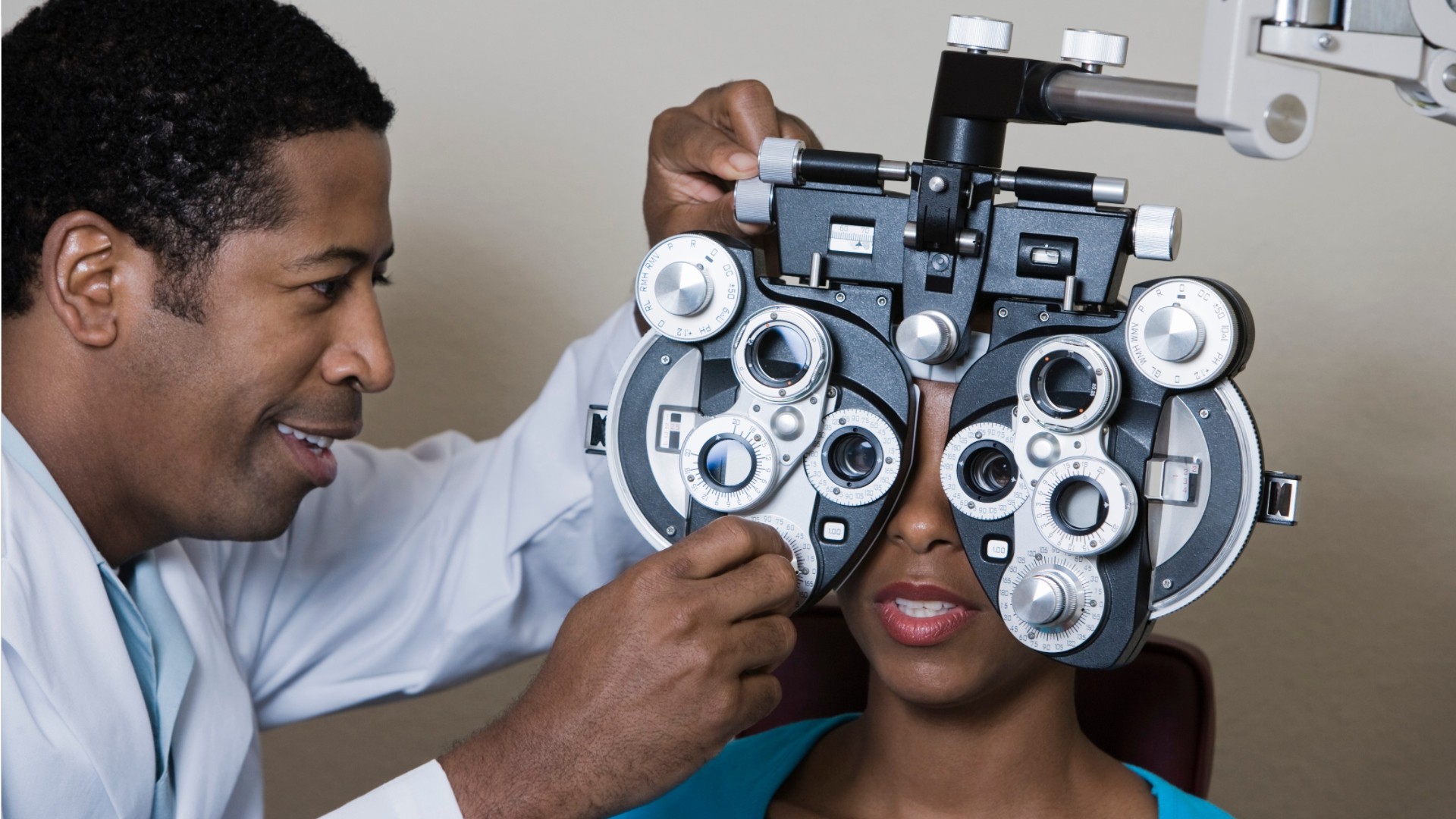Check Out Advanced Services at Opticore Optometry for Eye Health
Exploring the most recent Technical Developments in Optometry and What They Mean for Eye Doctors
In the ever-evolving field of optometry, recent technical advancements are reshaping just how practitioners come close to eye care. From the accuracy of Optical Coherence Tomography to the nuanced insights offered by AI-driven diagnostic tools, these technologies are setting new criteria in patient evaluation and treatment. Teleoptometry is positioned to redefine availability, making certain that knowledge goes beyond geographical limitations. As these developments penetrate the practice, optometrists are encountered with the difficulty of accepting these devices to enhance person results. Yet, the concern remains: how will these technological changes redefine the roles and duties within the career?
Technologies in Diagnostic Tools
Advancing the field of optometry, technologies in diagnostic tools have revolutionized the way eye treatment experts analyze and identify aesthetic impairments and ocular conditions. The previous decade has experienced substantial technical innovations, enabling more exact and thorough analyses. Optical Coherence Tomography (OCT), as an example, provides high-resolution cross-sectional pictures of the retina, enabling the very early detection of conditions such as glaucoma and age-related macular deterioration. This non-invasive imaging strategy has actually ended up being essential in modern optometric method.
One more trick development is the intro of advanced corneal topography systems, which map the surface area curvature of the cornea with accuracy. These tools are especially advantageous for fitting call lenses and detecting corneal conditions. Additionally, digital retinal imaging has actually changed typical ophthalmoscopy, supplying thorough, panoramic views of the retina that assist in comprehensive aesthetic evaluations.
The growth of wavefront aberrometry has additionally been essential, allowing the evaluation of refractive mistakes with unparalleled precision (Opticore Optometry). This modern technology helps in personalizing rehabilitative lenses and improving medical end results for refractive surgeries. Collectively, these analysis innovations encourage eye doctors to provide exceptional patient care, making certain early treatment and customized therapy approaches, ultimately enhancing aesthetic health results
AI in Individual Monitoring
Building on the structure of innovative analysis devices, the unification of fabricated knowledge (AI) in individual administration represents a transformative jump for optometry. AI systems are progressively utilized to enhance efficiency, accuracy, and customization in patient care.
Furthermore, AI-driven systems assist in streamlined client interactions and administrative processes. Automated organizing, online assessments, and personalized follow-up plans not only boost patient complete satisfaction yet additionally optimize time administration for professionals. These systems can triage individuals based on the necessity of their conditions, ensuring that those in critical requirement get punctual attention.
Furthermore, AI improves decision-making by giving optometrists with evidence-based referrals and treatment paths. By integrating information from digital wellness documents, AI tools provide understandings that notify professional choices, reducing the risk of mistakes and enhancing patient results. As AI proceeds to evolve, its function in individual administration will likely increase, reshaping the landscape of optometric care.
Breakthroughs in Retinal Imaging
In the world of optometry, retinal imaging has actually witnessed exceptional technological developments that are improving diagnostic abilities and patient care. Innovations such as Optical Coherence Tomography (OCT) and fundus digital photography have actually reinvented exactly how optometrists imagine and assess the retina.
Boosted imaging methods like OCT angiography are more refining diagnostic precision. This non-invasive method maps blood circulation in the retina, offering critical understandings right into vascular health without the need for color shots. Additionally, flexible optics modern technology is being incorporated right into retinal imaging systems to correct eye aberrations, providing unmatched photo clearness. Such advancements assist in the recognition of min retinal changes that could indicate disease development.
Additionally, innovations in expert system are augmenting retinal imaging by making it possible for automatic analysis of big datasets. These systems aid optometrists in determining patterns indicative of pathology, thus enhancing diagnostic precision and efficiency. Collectively, these advancements are changing retinal imaging into a keystone of modern eye care, enhancing outcomes and broadening restorative opportunities.
Teleoptometry's Expanding Duty
Teleoptometry is significantly becoming i was reading this an essential part of eye treatment, driven by innovations in digital interaction and analysis devices. As optometry embraces electronic makeover, teleoptometry facilitates remote consultations, permitting eye doctors to expand their services past traditional boundaries. This is particularly helpful in country and underserved locations where access to specialized eye treatment is usually limited. By leveraging high-resolution video conferencing and progressed retinal imaging, optometrists can carry out extensive eye tests from afar, ensuring timely medical diagnosis and therapy.
The assimilation of expert system (AI) further boosts teleoptometry, allowing the evaluation of aesthetic data and assisting in the detection of ocular conditions such as glaucoma and diabetic person retinopathy. AI-powered algorithms can swiftly translate complicated imaging information, providing optometrists with important insights that strengthen professional decision-making.
In addition, teleoptometry supports connection find out of care with smooth integration with electronic health documents (EHRs), enabling optometrists to preserve detailed client backgrounds. This makes certain that people receive tailored and regular care even when consulting with various experts.
Despite these advantages, difficulties stay, including making sure data safety and security and taking care of person assumptions. Nevertheless, teleoptometry stands for a substantial stride in the direction of more obtainable, efficient, and patient-centered eye treatment. As innovation progresses, its role is positioned to expand further.

Future Patterns in Eye Treatment
A myriad of innovative trends is established to reshape the future of eye treatment, driven by technological advancements and the progressing needs of people. One significant fad is the integration of expert system (AI) in diagnostics, which guarantees to boost the precision and efficiency of eye evaluations. AI algorithms can evaluate vast amounts of information from retinal pictures, possibly detecting conditions like diabetic person retinopathy and glaucoma earlier than conventional approaches.
In addition, customized medication is gaining traction in optometry, with hereditary screening notifying tailored treatment strategies. This strategy intends to optimize client results by tailoring interventions to private hereditary profiles. Wearable innovation, such as wise contact lenses, is additionally coming up, using real-time monitoring of intraocular stress or glucose levels, thus giving continuous insights into he has a good point eye and systemic health.
The fostering of enhanced truth (AR) and virtual reality (VIRTUAL REALITY) in training and patient education and learning is an additional arising trend. These innovations provide immersive experiences that can improve understanding and abilities both for eye doctors and patients. As these patterns evolve, optometrists should remain abreast of technical innovations to give innovative treatment, making certain improved patient results and fulfillment in the dynamic landscape of eye treatment.
Final Thought

Jointly, these diagnostic improvements encourage optometrists to supply premium patient treatment, making certain very early intervention and tailored therapy techniques, ultimately improving visual health results.

As these modern technologies continue to advance, optometrists need to adapt and incorporate them into practice, eventually optimizing process performance and boosting the standard of eye treatment provided to clients.